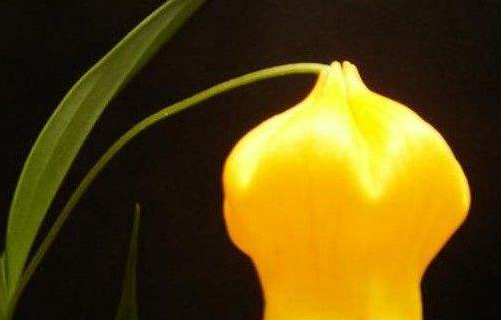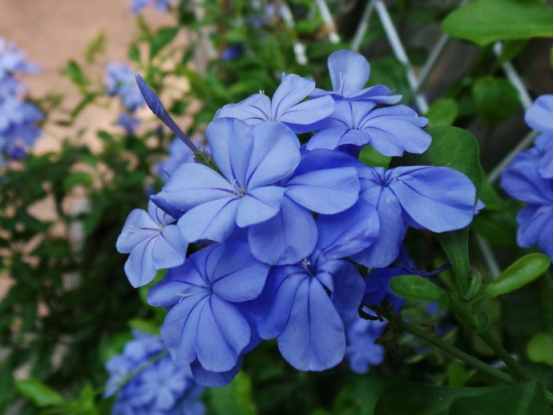The culture method of snow drop flower
1. Light
Snowdrop flowers do not have high requirements for light, they should often let the sun shine directly in spring, autumn and winter, and the high temperature in summer needs a small amount of shade to facilitate plant growth.

two。 Temperature
The suitable temperature for snow drop flower growth is 15-28 ℃, which is cold-resistant, but not heat-resistant. Attention should be paid to cooling in summer and dormancy when the temperature is lower than 10 ℃ in winter.
3. Water and fertilizer
Generally, a certain amount of base fertilizer should be applied when planting, and thin fertilizer is often applied during the growing period, so that its nutrients are uniform, and plants grow slowly in summer, so that they need to reduce water and fertilizer; watering must be grasped, and water can be watered in the early morning or evening to ensure sufficient water. Pay attention to spraying water fog when high temperature is high.
Snow drop flower language to introduce so much to you, such a pure flower, let's try to raise a few plants.
The culture method of snow drop flower
Snow drop flower, Leucojum vernum alias: snow bell flower, lily of the valley daffodil, snow lotus Alliaceae, snow drop flower is native to central Europe and the Caucasus.
Plant height 20-30cm, bulblet globose. Leaves tufted and banded, ca. 20cm. Scape short and hollow, oblate, apical bearing a single flower or a few aggregates to form umbels, pendulous, broadly campanulate, tepals 6, flowers white, apex with a yellow-green spot, flowering from March to April.
Strong adaptability, living in the middle and lower reaches of the Yangtze River can survive the winter in the open field. Like cool and moist environment, good fertile and humus-rich soil, can grow in sunny or semi-shady land. It germinates in early spring and blossoms from March to April. The bulb dormant in the soil.
Farming. The bulb culture was mainly carried out in the dormant period of bulbs from September to October. The planting depth is 5 cm, which can be separated after one planting, and the ball can be dug up again for 3-4 years.
Cultivation. The ground should be planted with sufficient basic fertilizer and a small amount of bone powder. If the bulbs are not planted immediately after digging, they should be temporarily stored in wet sand. The potted plant will be carried out in November and put outside after planting. After rooting and sprouting, it will be moved indoors and placed in a sunny place. It will blossom in about 50 days. The storage temperature of bulb is 15 ℃.
Diseases and insect pests. The main occurrence of leaf spot disease, with 50% thiophanate wettable powder 700x liquid spray, pest nematode harm, can be irrigated with 1500 times of trichlorfon.
Application. The snow dripping plants are low, the flowers and leaves are luxuriant, and they bloom proudly in spite of the cold in spring. Suitable for cluster planting under semi-shady forest or lawn, but also suitable for flower border and rock garden embellishment, can also be potted for indoor decoration or cut flowers. Culture methods and matters needing attention of snow dripping flowers
Culture method of snow drop flower light and temperature
Snowdrop flowers do not have high requirements for light, have a certain degree of shade tolerance, and can grow in both sunny and semi-shady places. However, in spring, autumn and winter, it is necessary to often direct sunlight to get sufficient light, while in hot summer, it is necessary to properly shade so as not to affect the growth of snowdrop flowers.
The suitable growth temperature of snow drop is between 15 ℃ and 28 ℃. Snow drop peanut likes cool and afraid of heat, so it is difficult to spend summer, and it lacks resistance to frost. If the temperature is lower than 10 ℃, it will make the plant dormant.
Humidity
The air relative humidity of snowdrop growth is the best between 40 and 65%, and the environment had better be a little drier. The growing environment of snow dripping flowers can not be too wet, it is more afraid of rain, if the overcast and rainy weather lasts too long, it is easy to breed diseases and insect pests. Keeping the leaves of snow drop flowers dry at night will be more conducive to the growth of snow drops.
Water and fertilizer management
Snowdrop flowers do not have high requirements for fertilizer and water. Basically, when planting, we should first apply a certain amount of base fertilizer, and then during the growth period, we should pay attention to the thin application of regular fertilizer to ensure the completeness of various growth elements, not to apply too much fertilizer, and not to make snow dripping flowers lack certain elements. to avoid all kinds of problems with its growth.
Watering should also be reasonably handled. Generally speaking, there should be plenty of water when the weather is sunny, and less or no water on cloudy and rainy days. Slow growth in summer should be properly controlled by water and fertilizer, but should be properly sprayed when the temperature is high.
Reproduction method
Snow drop is a bulbous plant, which mainly uses the method of dividing balls to reproduce.
Matters needing attention in Culture of Snowdrop Flower Diseases
The main disease of snow dripping flowers is the outbreak of leaf spot.
Insect pest
Snowdrop flowers sometimes suffer from nematodes.
- Prev

Breeding methods of Palace Lantern Lilium
Seed reproduction and bulb reproduction are generally adopted. The palace lantern lily is delicate in appearance, exquisite and lovely, and the orange flower bell with bright green stems and leaves is very lovable. It is an excellent flower arrangement material and bride bouquet material with very high ornamental value.
- Next

Matters needing attention in culturing Lanhuadan
Blue snowflakes are born on hillsides and on the ground. They like warmth and are not resistant to cold. In North China and other temperate regions, they can be cultivated as flowers with a suitable temperature of 25 ℃ and light, but they should not be exposed to the hot sun. In summer, they should pay attention to proper shade and require a moist environment. Drying is disadvantageous to their growth and is not resistant to drought.
Related
- Fuxing push coffee new agricultural production and marketing class: lack of small-scale processing plants
- Jujube rice field leisure farm deep ploughing Yilan for five years to create a space for organic food and play
- Nongyu Farm-A trial of organic papaya for brave women with advanced technology
- Four points for attention in the prevention and control of diseases and insect pests of edible fungi
- How to add nutrient solution to Edible Fungi
- Is there any good way to control edible fungus mites?
- Open Inoculation Technology of Edible Fungi
- Is there any clever way to use fertilizer for edible fungus in winter?
- What agents are used to kill the pathogens of edible fungi in the mushroom shed?
- Rapid drying of Edible Fungi

